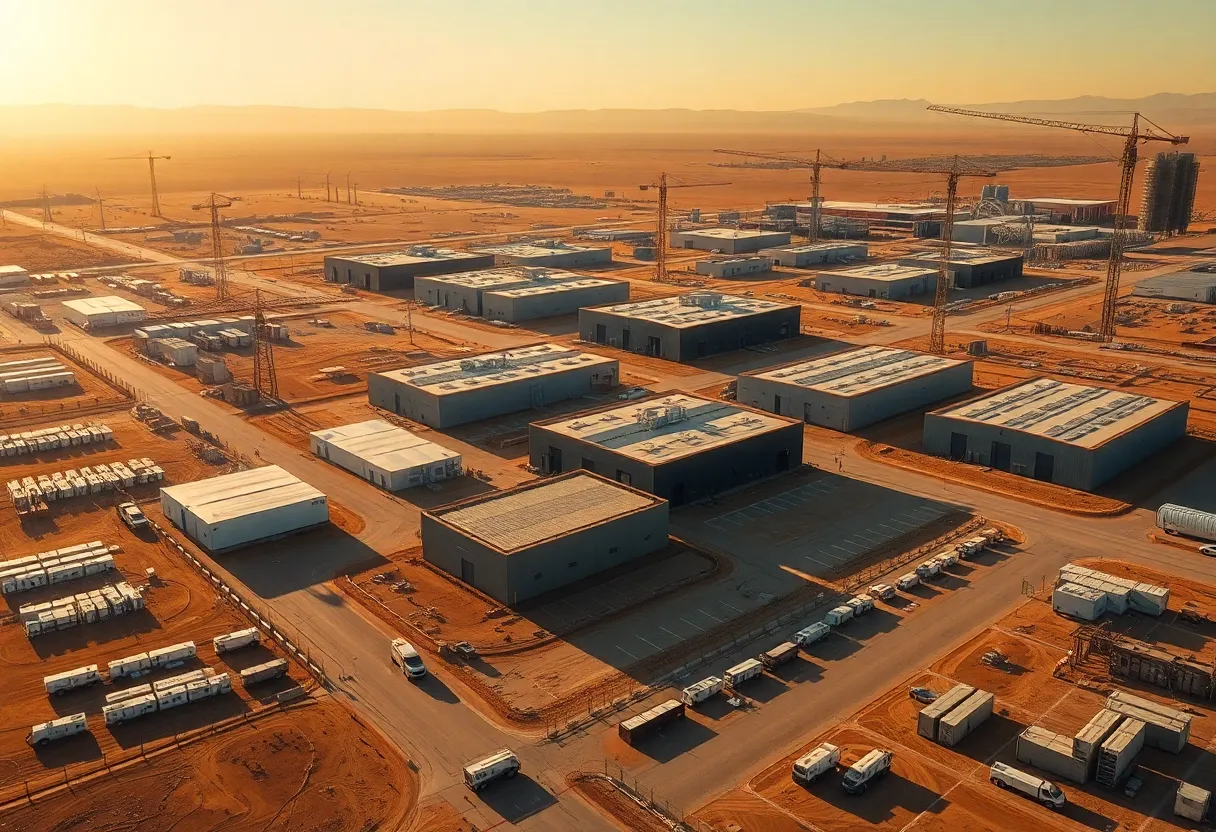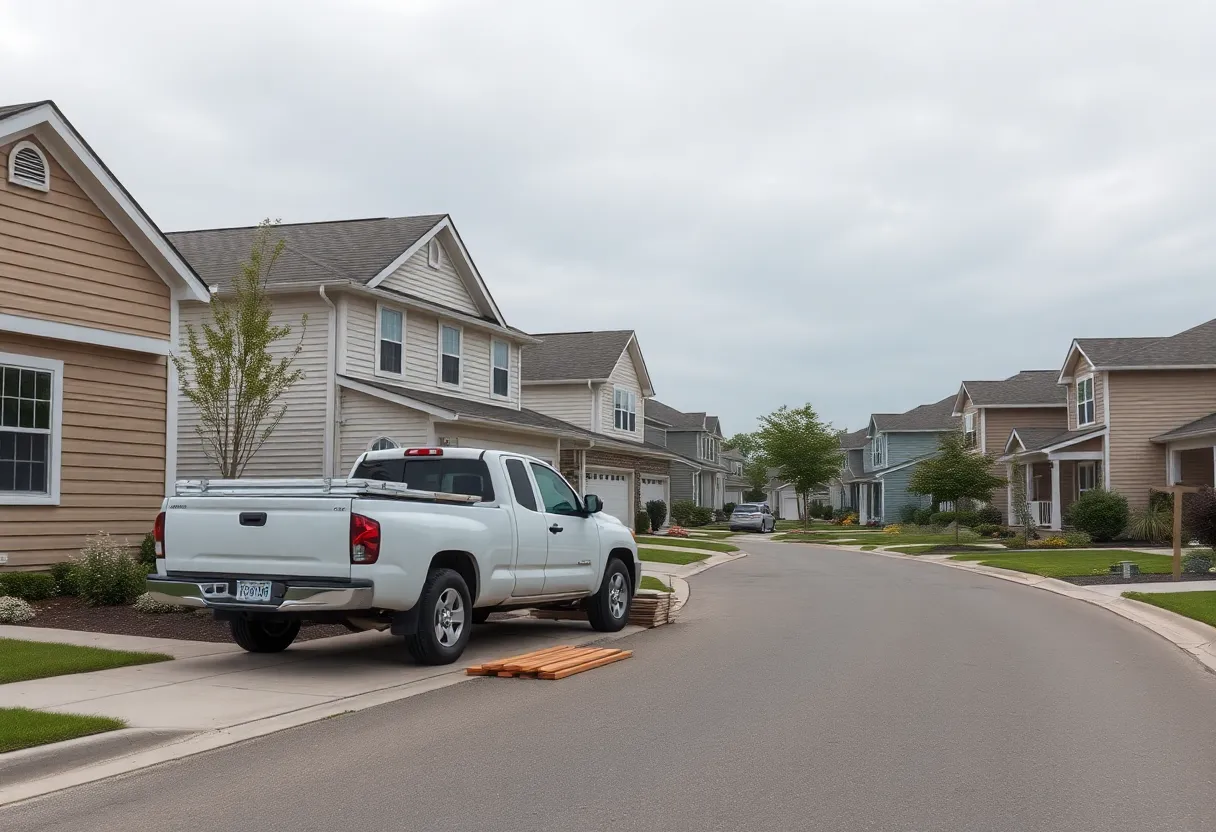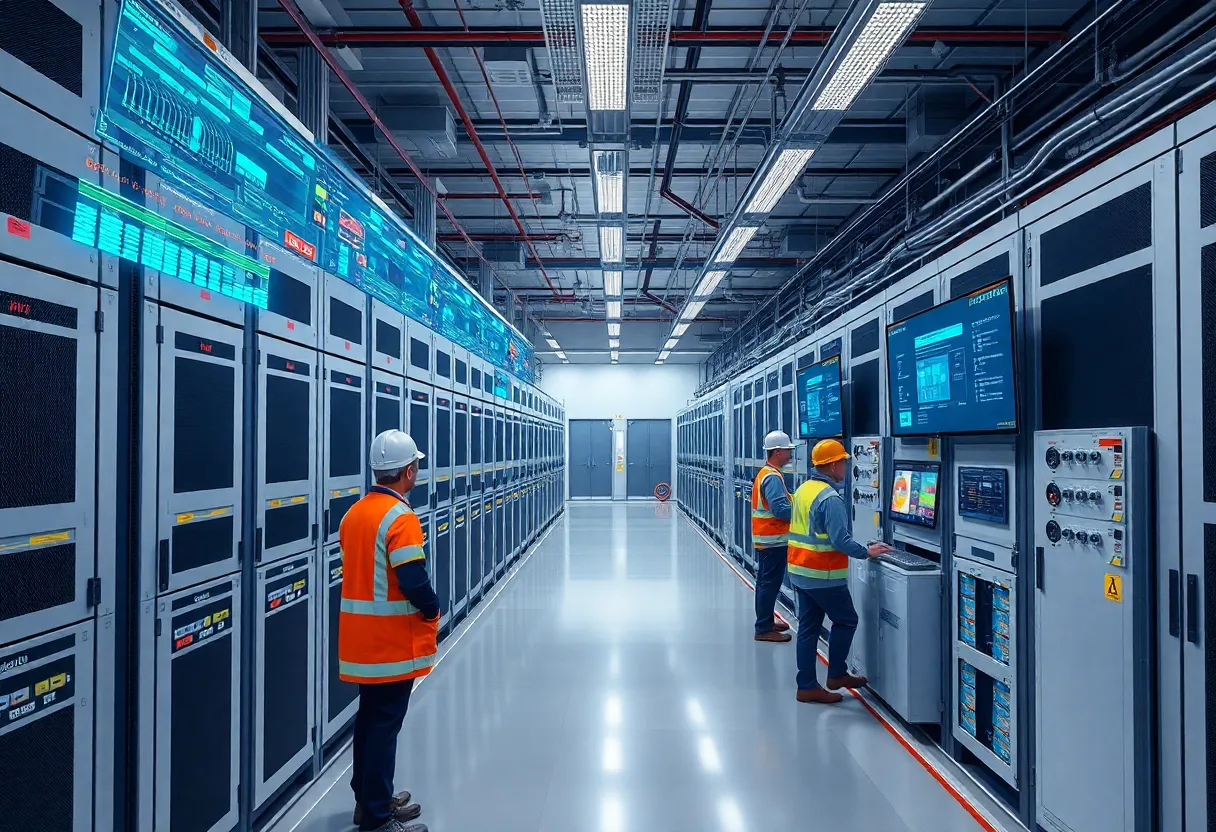Phoenix metro, Arizona, September 1, 2025
News Summary
The Phoenix metro has surged to the top of U.S. industrial markets, driven by a wave of mission-critical facilities — semiconductors, data centers, EV battery plants and large distribution centers. Strong public and private investment, fast-tracked permitting, expanded utilities and targeted workforce training accelerated development. Nearly $932 million in industrial sales and one of the nation’s highest average sale prices highlight strong demand, while a multi-million-square-foot construction pipeline strains power, water, housing and labor. Contractors are adopting BIM, drone surveying and modular prefabrication, and training programs aim to fill an estimated 20,000 new construction roles needed to sustain growth.
Phoenix Metro Surges to the Top of U.S. Industrial Markets in Early 2025
The Phoenix metro area claimed the top spot among U.S. industrial markets in the first quarter of 2025, described as an “overnight success” decades in the making by industry observers. A broad alignment of coordinated investment in infrastructure, innovation and workforce development positioned Arizona and its contractors to lead a wave of industrial growth. Mission‑critical facilities such as data centers and semiconductor plants are migrating to the desert, accompanied by a surge of big‑box logistics facilities that are reshaping the regional economy.
Across Arizona, the expansion is testing utilities, workforce pipelines and construction capacity in ways not seen in recent memory. Utilities are expanding grid capacity and resilience to support fab‑scale demand, water infrastructure is advancing reuse and recycling strategies to sustain large‑scale operations in a desert environment, and permitting processes have been fast‑tracked to keep pace with manufacturers seeking rapid scale. These shifts are helping sustain a high velocity of project start‑ups and completions, while also forcing a rethinking of traditional workflow sequences in the construction industry.
What is driving the growth and where is the demand coming from?
Growth at this scale stems from a blend of policy support, targeted capital, and a robust regional ecosystem. Since 2020, the state has secured substantial semiconductor‑related capital, with billions committed to high‑tech infrastructure projects. The regional leadership quickly captured federal funding opportunities aimed at expanding U.S. semiconductor manufacturing and research, enabling a pipeline of megaprojects and build‑to‑suit opportunities. The result is a steady stream of large formats, including buildings in the 1 million square feet and larger category, along with multi‑phase developments that broaden the industrial footprint across the Phoenix area.
Arizona’s favorable climate and geography have long drawn data centers and large‑scale operations, yet policy alignment and strategic investment have been the catalysts that turned potential into execution. Utility providers expanded capacity to meet peak demands, while water agencies advanced reuse and recycling strategies to sustain operations in a desert climate. The combination of climate, policy, and investment creates a durable foundation for continued growth, with planners projecting sustained demand in the near term.
How is the workforce being prepared to meet the demand?
Workforce strategy is treated as a long‑term investment in people. Statewide programs focus on targeted training for semiconductor labor needs, with quick‑start training tracks designed to accelerate entry into skilled roles. Higher education and community colleges have built engineering pipelines, advanced manufacturing labs and research centers to feed the regional talent ecosystem. New crews are trained through hands‑on rotations, shadowing, and exposure to integrated data systems, drone surveying and BIM coordination from day one. Industry leaders emphasize crew rotations and recovery days to sustain long‑term high performance and guard against burnout as demand remains intense.
Labor projections indicate that the region will need thousands more construction workers by the end of the decade, underscoring the importance of partnerships with trade schools and technical bootcamps. These efforts are complemented by a pipeline of local talent development designed to align workers with specific roles, from field supervisors to prefabrication specialists. The goal is to build depth and resilience within the workforce so the region can sustain industrial growth without sacrificing safety or quality.
What do the latest market metrics show?
Market data highlight a sustained level of activity. The first half of 2025 saw a high share of large‑format leases, with several multi‑million‑square‑foot deals shaping the national landscape. Phoenix accounted for a meaningful portion of the top industrial leases in that period, underscoring the area’s appeal to large occupiers in logistics, distribution and manufacturing. The region has absorbed substantial space in buildings larger than 700,000 square feet over the prior two years, and the pace of new space under construction remains above national averages. Completion figures show a dynamic market in transition, with a strong pipeline of projects underway and a growing inventory of space still being developed to accommodate ongoing demand.
In the Phoenix market, key indicators include a vacancy rate hovering in the mid‑single digits and rents that sit well above many peer markets, reflecting strong demand for high‑quality industrial space. The market has also seen a notable level of ongoing development, with projects under construction expanding the metro’s industrial footprint. Local developers and investors have continued to advance several high‑profile builds, including large build‑to‑suit campuses and multi‑building parks, while existing facilities remain in demand for refurbishments and expansions.
What challenges and constraints are shaping the near‑term outlook?
Providers of power and water, along with housing and labor, are identified as the primary pressure points for sustaining growth. The Phoenix Valley is undergoing a transformation that requires careful coordination among owners, utilities, policymakers and contractors to maintain momentum. The pace of growth necessitates disciplined project delivery and sustainable work practices. As volumes rise, the industry is balancing speed with worker well‑being, embracing digital construction tools, lean planning and modularization to reduce on‑site chaos and improve predictability. All parties acknowledge that the next several years will test the region’s capacity to scale responsibly while delivering on accelerated schedules.
What notable projects and market activity are shaping the landscape?
Several high‑profile projects exemplify the scale and ambition of the current cycle. A major EV battery manufacturing complex is under development to produce cylindrical cells, representing one of the largest standalone battery manufacturing investments in North America. Nearby, a large beverage production and distribution facility recently opened, signaling continued expansion in the consumer goods sector. The industrial market is also characterized by a wave of distribution centers and logistics hubs, including campus‑style developments and build‑to‑suit sites near major transportation corridors. The overall market activity includes substantial sales volume and a growing pipeline of completions that together indicate a robust, diversified industrial economy in the Phoenix region.
In parallel, the region continues to attract capital for redevelopment and expansion of existing assets, with portfolios and single properties changing hands as investors seek to position space for ongoing e‑commerce and manufacturing demand. The combination of large transactions, rising rents and a strong construction pipeline signals enduring momentum, even as the market adjusts to evolving occupancy needs and the integration of new technologies into construction and operations.
Outlook
The near‑term outlook remains positive for the Phoenix metro’s industrial sector, driven by continued policy alignment and sustained demand for high‑quality space. The area is positioned to absorb new capacity as utilities expand and large operators bring on new facilities. Ongoing workforce development, digital construction methods and a focus on sustainable practices will be essential to maintaining pace without compromising safety or worker welfare. The market’s trajectory will hinge on the ability to manage power, water, housing and labor constraints while delivering complex, mission‑critical projects on accelerated timelines.
Key market features at a glance
| Feature | Summary |
|---|---|
| Market status | Top national position in the first quarter of 2025 for industrial markets with rapid growth across logistics, data centers and semiconductor facilities. |
| Drivers | Coordinated infrastructure investment, policy alignment, and workforce development fueling demand for large‑scale facilities. |
| Key sectors | Data centers, semiconductor facilities, and big‑box logistics/distribution. |
| Capacity pressures | Strains on utilities, water resources, housing and labor; grid expansion and reuse strategies under way. |
| Construction practices | Digital tools (BIM), drone data, lean planning, modular prefabrication, crew rotations and real‑time problem solving. |
| Workforce outlook | Projected need for thousands of new workers by 2030; ramped training programs and partnerships with education providers. |
| Notable projects | Large battery plant (LG‑related), beverage factory and multiple build‑to‑suit/logistics campuses; ongoing development activity. |
| Market metrics | High absorption in large formats; significant space under construction; increasing rents and limited available space. |
Frequently Asked Questions
A: A combination of policy alignment, targeted capital investments, and a regional ecosystem focused on high‑tech manufacturing, data centers and large‑format logistics is accelerating construction and occupancy in the Phoenix area.
A: Data centers, semiconductor facilities, and big‑box logistics are the driving sectors, with additional activity in related build‑to‑suit and campus‑style developments.
A: Utilities are expanding grid capacity and resilience, water agencies are pursuing reuse strategies, and permitting processes are being accelerated to support rapid scaling.
A: Statewide training programs, engineering and manufacturing pipelines at universities, and targeted quick‑start tracks for semiconductor roles are forming a long‑term workforce strategy. Hands‑on rotation and BIM coordination experience are part of the training approach.
A: The market shows single‑digit vacancy levels with rents higher than many peers, reflecting strong demand for quality industrial space and ongoing development activity.
Additional key features
- Scale of development: Thousands of acres and millions of square feet under construction, with multiple projects underway simultaneously.
- Strategic locations: Proximity to major transport corridors and proximity to large consumer markets for distribution hubs.
- Environmental considerations: Water reuse initiatives and desert climate resilience integrated into project planning.
- Speed versus sustainability: A focus on maintaining a sustainable pace that protects workforce well‑being while meeting aggressive delivery timelines.
- Future capacity needs: Projections indicate continued demand for construction labor, utilities capacity, and housing near industrial zones.
Deeper Dive: News & Info About This Topic
Additional Resources
- AZ Big Media: Phoenix ranks among top-10 markets for industrial leases (2025)
- Wikipedia: Phoenix, Arizona
- Axios: TSMC industrial water reclamation plant in Phoenix (2025)
- Google Search: TSMC Phoenix water reclamation plant
- CommercialSearch: Speed Bay lands $100M for Phoenix flex industrial
- Google Scholar: Phoenix industrial flex development 2025
- CBRE: Phoenix industrial figures Q2 2025
- Encyclopedia Britannica: Phoenix industrial real estate
- Colliers: 2025 Q2 Greater Phoenix industrial market report
- Google News: Phoenix industrial market 2025





